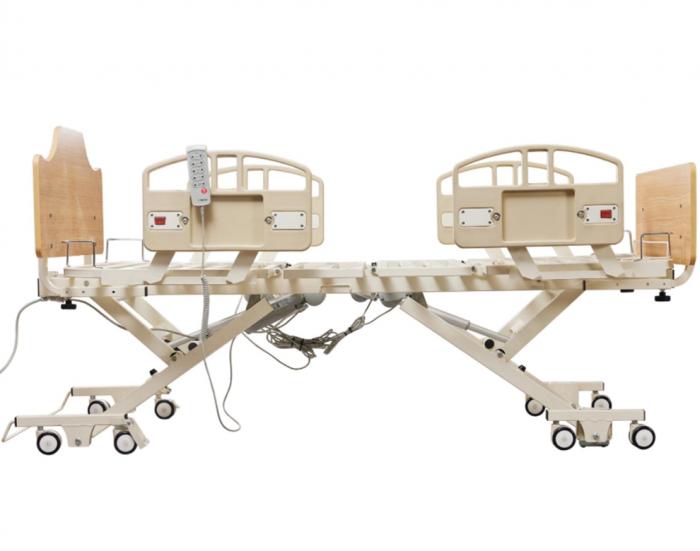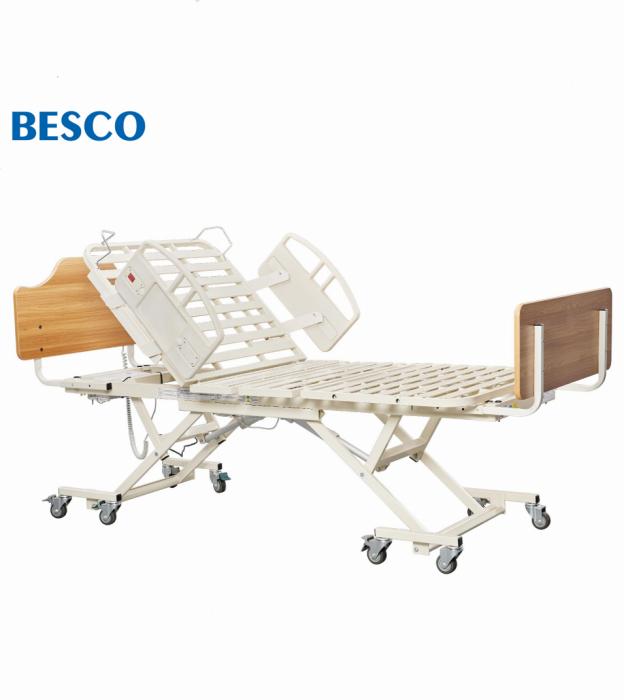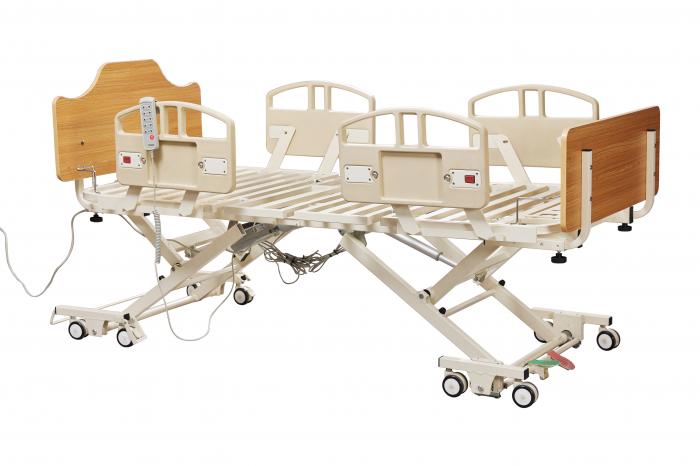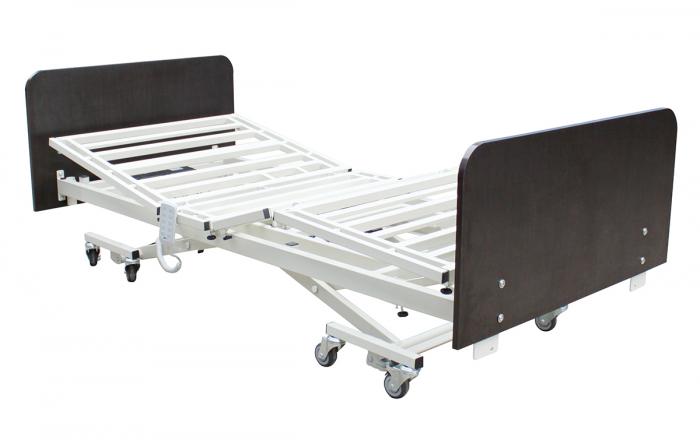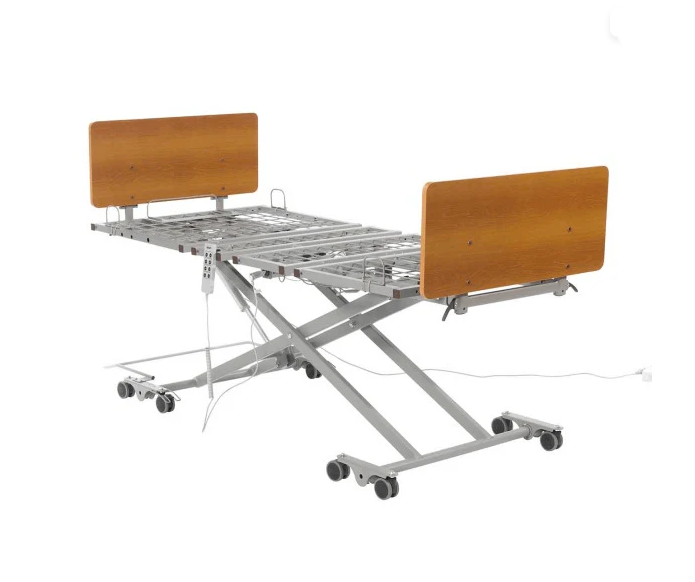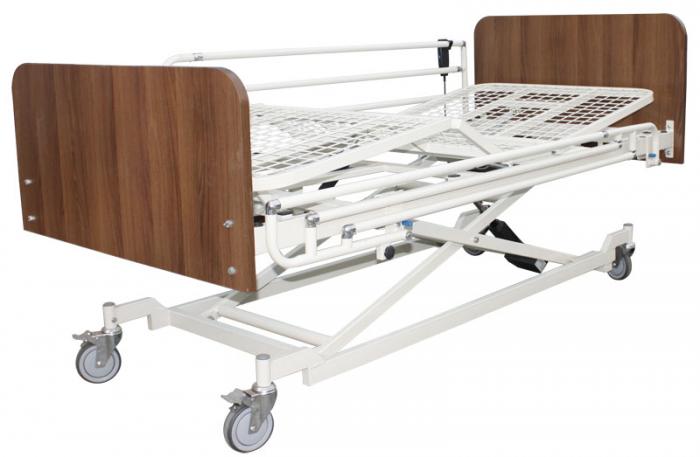| Name: | Long Term Care Bed(Heavy Duty ) |
|---|---|
| Model No.: | BES-HB001b |
| Price: | US750 |
| MOQ: | 20 units |
| Brand: | BESCO |
| LEAD TIME: | 30 DAYS |
| Weight Capacity: | 600 LBS |
| Keywords: | Heavy Duty Long Term Care Beds ,Heavy Duty Nursing Home Care Bed |
| SAMPLES: | available |
| Product Name: | LONG TERM CARE BED |
| Country of Original: | China |
| Payment Term: | T/T in advance |
| Port: | Shanghai |
| Office: | Zhengzhou,China |
Products Description
Long Term Care Beds (Heavy Duty )
FEATURES:
• Travels from a low of 7” to a convenient high height of 30”
• Center step safety lock
• 600 lbs. safe working load
• Self-leveling motors
• 4 Year warranty on electronics and 15 years warranty on bed deck and frame
• Swivel locking casters and flip down caster guides
• Baseboard bumper
• 10 Button handset
• Meets 60601-2-52
Height - Low Position:190mm
Height - High Position:750mm
Weight Capacity:600lbs
Bed Dimensions:2180*900*190mm
Width & Length Expansion:Max length 2360mm max width 1160mm
mattress max length 2200mm max width 1000mm
Motors:4 DC Motors,The overall lifting motor loading 6000N, the back motor and leg motor loading 5000N,input:24VDC
Deck Style:Steel pipe welding
Functions:Bed lifting, back plate lifting, leg plate lifting, front and rear tilting
Motor brand:4 Brands as option
Trendelenburg Positioning:Front and rear tilt angle 16.5°
Comfort Chair:Head deck lifting angle 65°
Leg/Foot Lift:Maximum hip-knee angle 34°
Battery Backup Option:24V1.3A Lead acid battery,Battery backup warranty for 12 months
Warranty:10 Years on Frame, 15 Years on Welds, 2 Years on Electrical
Caster Base:3-inch casters, 2 head casters with brakes, directional limit, and foot pedal brakes
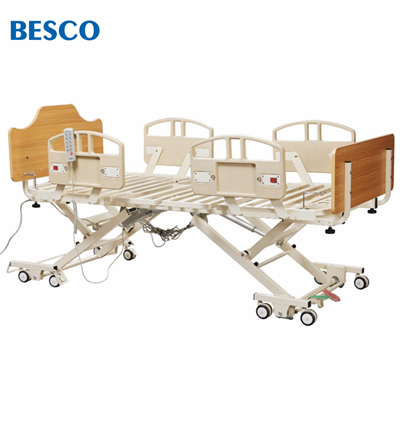
A long-term care bed is a specialized type of bed designed for individuals who require extended care and support due to chronic illnesses, disabilities, or limitations in their ability to perform daily activities. These beds are typically found in nursing homes, assisted living facilities, and rehabilitation centers, but can also be used in a home setting for those receiving in-home care.
Here's a more detailed explanation:
Purpose: Long-term care beds are designed to provide comfort, safety, and support for individuals who need assistance with mobility, personal care, and other daily tasks due to various health conditions.
Key Features:
Adjustability:
Many long-term care beds offer height adjustability (high/low feature) and can be adjusted in sections to facilitate patient positioning, transfers, and caregiver assistance.
Customization:
These beds can be customized with various accessories like specialized mattresses, side rails, overbed tables, and lighting to meet individual needs and preferences.
Safety Features:
Safety features like side rails, fall protection, and sturdy construction are often incorporated to minimize the risk of falls and injuries.
Bariatric Options:
Bariatric beds are available for individuals with higher weight requirements, offering extra width and reinforced construction.
Electric Profiling Beds:
These beds offer electronic controls for height and section adjustments, aiding in patient mobility, positioning, and comfort.
Distinction from Hospital Beds:
While both hospital and long-term care beds are designed for medical settings, they differ in their primary focus and features. Inspace Healthcare Furniture says hospital beds are often designed for acute care and patient transport, with more complex adjustability and features. Inspace Healthcare Furniture notes long-term care beds emphasize comfort, ease of use for daily care, and customization to individual needs.
Long-term care beds may not always include features like all-electric controls or as many adjustment points as hospital beds, but they are designed to be highly customizable to meet the specific needs of residents in long-term care settings.
How to use the long term care beds?
Long-term care beds, also known as hospital beds, are designed to provide comfort and support for individuals with mobility limitations or those who require specialized care. These beds often feature adjustable height and positioning, which can be controlled electronically or manually, and may include safety features like bed rails. Proper use involves understanding the bed's features, ensuring patient safety, and facilitating transfers and repositioning.
Key Features and Usage:
Adjustable Height:
Many long-term care beds can be raised and lowered, making it easier for patients to get in and out of bed and for caregivers to provide care.
Positioning Controls:
These beds allow for adjustments to the head and foot sections, often using a hand pendant or crank.
Safety Features:
Bed rails, mattress retainers, and floor locks are common safety features to prevent falls and ensure patient security.
Transfer Aids:
Some beds include features like IV pole holders or assist bars to facilitate transfers and mobility.
Manual vs. Electric:
Beds can be fully electric (with push-button controls for height and positioning) or semi-electric (with manual height adjustment).
Specialized Mattresses:
Air-flow mattresses or those with raised edges are available to prevent pressure sores and entrapment.
Important Considerations:
Patient Assessment:
Regularly assess the patient's physical and mental status to determine the appropriate bed settings and safety measures.
Fall Risk Management:
Consider the patient's risk of falling and use appropriate safety measures, such as bed rails, floor mats, and proper bed positioning.
Transfer and Mobility:
Use transfer aids and adjust the bed height to facilitate safe and comfortable transfers.
Caregiver Assistance:
Understand how to operate the bed controls and provide assistance with positioning and transfers.
Manufacturer's Instructions:
Always refer to the manufacturer's instructions for specific details on bed operation and maintenance.
In summary, using a long-term care bed effectively involves understanding its features, prioritizing patient safety, and ensuring proper care and assistance
